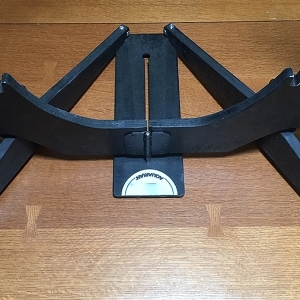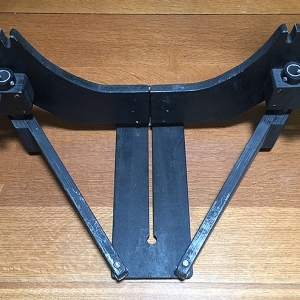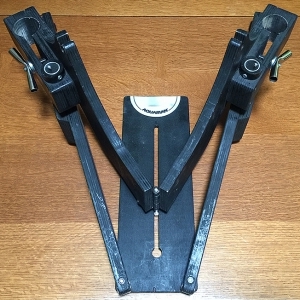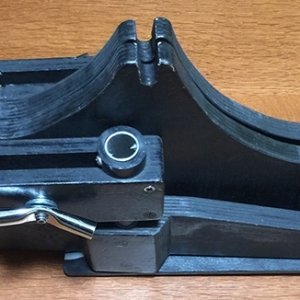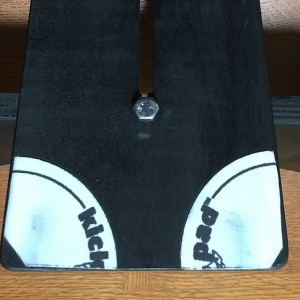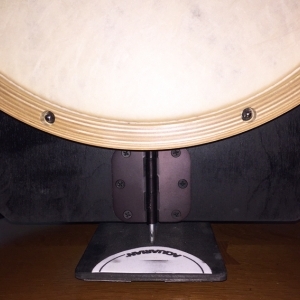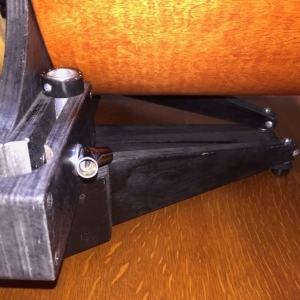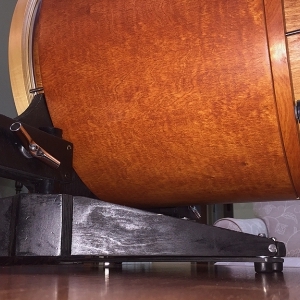The Whitney Drums Quickstand
The Whitney Drums Quickstand is the foundation of this unusual drumset. The multi-functioning, collapsable quickstand is an old-school engineering masterpiece. Its made almost entirely out of plywood, which gives it a lot of strength while remaining very lightweight. It’s also designed to be almost invisible. from the front of the drumset, giving the bass drum, toms, and cymbals somewhat of an appearance of floating off the ground.
When these pictures were taken, my quickstand had already been to 100 gigs, and I toss it into my stand bag unprotected. If I separated it out from the rest of my hardware, it wouldn’t have so many little digs in it, but I think the fact it still looks so good is also a testament of how tough this thing is.
The only alteration I’ve done to the quickstand was to repurpose the bass drumhead protector sticker that came with the bass drum head. I noticed where my foot pedal would be rubbing on the quickstand and cut the circle in half, using half on top, then I cut the other half into two more pieces to use on the bottom giving the quickstand’s pedal mounting board a little plastic protection where it would need it most. Surprisingly, the adhesive on that sticker has held all three pieces in place so far. The four rubber feet on the quickstand do a really good job of holding the bass drum and kit in place, so I don’t clamp down on the pedal-claw much at all to connect the pedal to the quickstand.
The quickstand creates a cradle for the bass drum that cantilevers the drum. The bass drum has minimal contact with the quickstand allowing for maximum resonance in the nearly free-floating shell of the drum. During set up you just place the drum into the cradle, aligning it with the two placement screws hidden under the batter-side rim. The bass drum shell has no visible air holes (they are hidden behind lugs, out of sight), no tom-mounts, no lugs, and no leg mounts. This not only gives the bass drum a distinctive look, it also frees up the shell to vibrate. The quickstand also raises up this smaller bass drum so that the bass drum beater hits just off-center of the drum head.
The quickstand also holds two aluminum poles that you can mount your toms and cymbals on (and snare too, if you like). The first two pictures show the poles in place so you can see how they fit into the quickstand. This gets nine stand legs off the floor for my set up, out of my trap bag and makes the set look more simple, and shrinks my stage footprint.
Having these pole bases off the floor like this does make for a little bit of unintended movement of the drums and cymbals. It’s not a lot, but it is more than if you had everything on its own stands and this can take a little getting used to. If you are pressing down on one of the toms (like when bending the drum note for special effect), the cymbal that shares that pole will move in towards you a bit, but only a tiny bit, and I’m used to that now.
The quickstand is absolutely brilliant.
